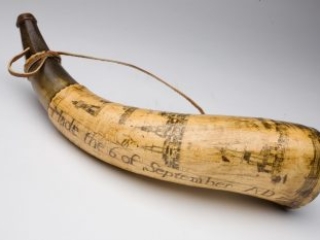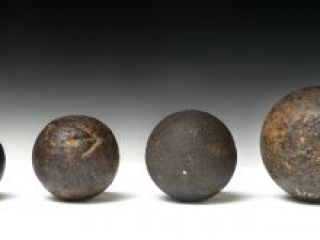Rocky Mountain Christian Academy
Washington, D.C.
October 3, 2022
Eighth grade students from Rocky Mountain Christian Academy enjoyed a special collections viewing featuring several library and museum items as well as a hands-on visit with “George,” a cannon cast in 1777 by James Byers in Philadelphia, P.A. This six-pounder is on loan from the Society of the Cincinnati of the State of South Carolina. No more than ten marked American made bronze cannons from the war are known. South Carolina Society member William Marshall created highly accurate reproduction artillery tools and ammunition to accompany “George” to show Anderson House visitors, especially school children, how cannon teams operated and how cooperation and coordination were key components to the success of the Continental Army.
Read more about “George,” and the reproduction artillery tools, at: https://www.americanrevolutioninstitute.org/new-education-project-takes-aim-at-revolutionary-war-artillery/.
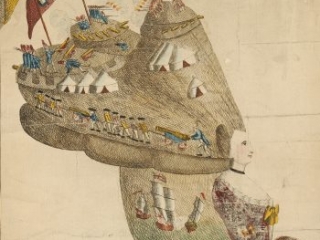
Bunkers Hill or America’s Head Dress
Mary Darly
London: M. Darly, [1776]The Robert Charles Lawrence Fergusson Collection
Published on the first anniversary of the Battles of Lexington and Concord, this pro-American satire depicts a great military battle taking place in a fashionable woman’s enormously tall coiffure, complete with ships, marching soldiers, cannon, flags and tents.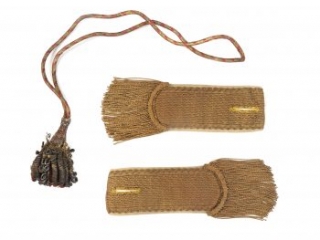
Field epaulets and sword knot
Probably American
Late 18th centuryThe Society of the Cincinnati, Museum purchase with funds donated by the New York State Society of the Cincinnati and The Robert Charles Lawrence Fergusson Fund, 1991
Hamilton is said to have worn this pair of field epaulets and sword knot—a device for securing a sword to an officer’s hand——during the Revolutionary War.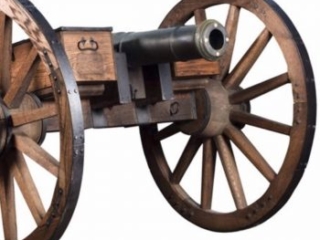
Six-Pounder
James Byers
Philadelphia, 1777The Society of the Cincinnati of the State of South Carolina
This six-pounder (cannon) barrel was cast for the Continental Army in 1777 at the Philadelphia foundry of James Byers. No more than ten marked American-made bronze cannons from the war are known. Most were melted down for other uses after the war. This one survived because it was used as a gatepost in the ornamental fence surrounding the monument in Charleston, South Carolina, to Revolutionary War hero William Washington. The top of the barrel is marked with the letters US surrounded by a ribbon that bears a mostly obliterated Latin inscription. Piercing the US emblem is a vindicta—a rod of freedom—with a liberty cap on top of it.